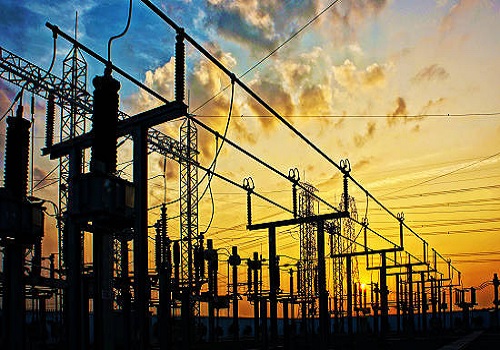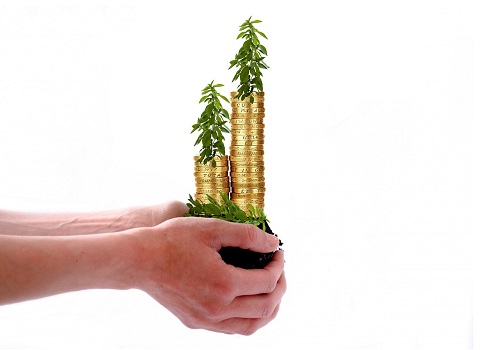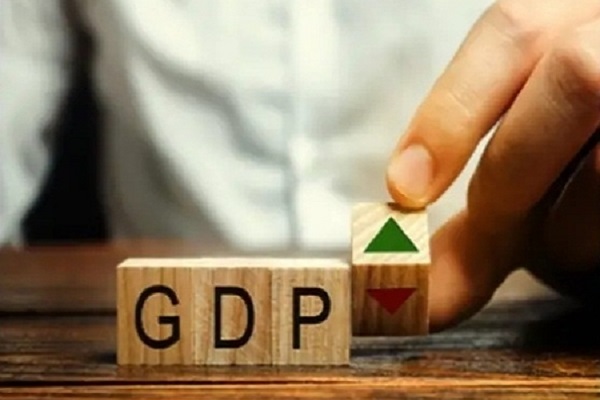Oil and Gas Sector Update : Oil price capped by over-supply in CY25 amidst demand concerns By JM Financial Services Ltd

IEA has marginally cut its CY24 global oil demand growth to 0.8mmbpd, but raised its CY25 estimate to 1.1mmbpd on China's stimulus. Brent remains below USD 75/bbl driven by oildemand-growth concerns in China and potential over-supply concerns in CY25 due to rise in nonOPEC+ oil supply growth; any potential easing of OPEC+ voluntary output cuts is likely to add to over-supply. IEA expects the oil market to turn into ~0.95mmbpd surplus in CY25 primarily led by 1.5mmbpd growth from non-OPEC+ countries; it expects surplus to be higher at ~1.4mmbpd if OPEC+ phases out its 2.2mmbpd voluntary output cuts over Apr'25-Sep’26. The market is also assessing the potential impact of the Trump administration on oil prices in terms of: a) boosting US domestic oil & gas production; b) ending Russia-Ukraine war and easing sanctions on Russian oil; and c) potential tightening of sanctions on Iran and Venezuela. However, we believe OPEC+ will continue to use its pricing power to support Brent crude price ~USD 75/bbl by further deferring the unwinding of output cuts to ensure the market remains in deficit/minimal surplus (as detailed in our recent note Saudi Arabia - shift in strategy from price to market share?). Hence, we maintain BUY on Oil India/ONGC given robust ~25%/15% production growth outlook in the next 1-3 years; Oil India also benefits from lucrative NRL capacity expansion. However, we believe OMCs’ – particularly that of HPCL – risk-reward still appears unfavourable as CMP is discounting gross marketing margin to be higher than the historical average of INR 3.5/ltr and ignoring their aggressive capex plans.
* IEA marginally cuts CY24 global oil demand growth to 0.84mmbpd, but raised CY25 estimate to 1.1mmbpd on China's stimulus: IEA in its Dec’24 monthly report has marginally cut its global oil demand growth estimate for CY24 by 80kbpd to 0.84mmbpd (a tad below EIA estimate of 0.9mmbpd and much lower than OPEC’s optimistic growth estimate of 1.61mmbpd), but raised its demand growth estimate for CY25 by 110kbpd at 1.1mmbpd due to potential boost from China's stimulus (vs. EIA's estimate of 1.3mmbpd and OPEC estimate of 1.54mmbpd) — this compares with historical average demand growth of 1.2mmbpd over CY2000-19. The weak global oil demand growth estimate is due to weak China oil demand driven by: a) weak economic activity; b) rising adoption of electric vehicles (EVs), LNG trucks & other alternative fuels; and c) high-speed rail network restricting growth in domestic air travel. Over the past decade, China's oil demand growth has averaged ~600kbpd, accounting for +60% of average global oil demand growth; however, IEA expects China's oil demand growth at only ~140kbpd in CY24 and ~220kbpd in CY25 or only 20% of average global oil demand growth — Exhibit 1-2.
* Global oil inventories decline by ~39mmbbl MoM in Oct’24 with OECD inventory still ~90mmbbl below 5-year average; global oil supply up 130kbpd MoM in Nov’24: IEA estimates global oil inventories declined by 39mmbbl MoM in Oct'24 with OECD industry inventories falling by 31mmbbl MoM to 2,778mmbbl, still 92mmbbl below the 5-year average — Exhibit 4. Preliminary data suggest global oil inventories rebounded in Nov'24 as global oil supply rose by 130kbpd MoM in Nov'24 because OPEC+ crude output rose by 310kbpd MoM in Nov’24 to 41.4mmbpd due to recovery in output from Libya (to 1.18mmppd from 0.96mmbpd in Oct’24) and Kazakhstan (to 1.45mmppd from 1.32mmbpd in Oct’24) and slightly higher output from Iran (up 50kbpd to 3.4mmbpd); however, this was partly offset by lower output from Iraq (down 50kbpd at 4.2mmbpd), Venezuela (down 30kbpd at 890kbpd) and Congo (down 20kbpd at 240kbpd) while output was largely stable MoM for Saudi Arabia (at 9.04mmbpd) and Russia (down 10kbpd at 9.25mmbpd).
* Brent remains below USD 75/bbl on demand concerns and potential ~1mmbpd surplus in CY25; OPEC+ likely to try to limit the surplus: Brent remains below USD 75/bbl driven by oildemand-growth concerns in China and potential over-supply concerns in CY25 due to rise in non-OPEC+ oil supply growth; any potential easing of OPEC+ voluntary output cuts is likely to add to surplus. IEA expects the oil market to turn into ~0.95mmbpd surplus in CY25 (from deficit of ~0.2mmbpd in CY24 as OPEC+ output cut partly offset non-OPEC+ oil supply growth) as it expects global oil supply to grow by ~1.9mmbpd in CY25, primarily led by 1.5mmbpd growth from non-OPEC+ countries (US, Brazil, Guyana, Canada and Argentina
Exhibit 3) and aided by higher OPEC+ output by ~0.4mmbpd even in the absence of unwinding of OPEC+ cuts (due to continuous over-production from few OPEC+ countries); this compares to CY25 global oil demand growth of ~1.1mmbpd. IEA expects surplus to be higher at ~1.4mmbpd in CY25 if OPEC+ phases out 2.2mmbpd voluntary output cuts over Apr'25- Sep’26 as per the current agreement. However, we believe OPEC+ will continue to use its pricing power to support Brent crude price ~USD 75/bbl (near Saudi Arabia’s fiscal break-even crude price) by further deferring/reversing the unwinding of output cuts to ensure market remains in deficit/minimal surplus in case there are continued demand-related concerns (Exhibit 8). The pricing power of OPEC+ has got strengthened over the past 2-3 years due to: a) limited growth in US oil production as US shale investors have become disciplined in capital investment (Exhibit 10-11); and b) OPEC+ having cut output by ~10mmbpd in early CY20 to offset the ~10% decline in global oil demand post Covid; OPEC+ still has scope to cut output by another 3-5mmbpd.
* Market assessing potential impact of Trump administration on oil prices: The oil market will look for clarity on how the Trump administration could impact global oil prices in terms of: a) boosting US domestic oil & gas production; b) ending Russia-Ukraine war and potential easing of sanctions on Russian oil; and c) and any sign of potential tightening of sanctions on Iran and Venezuela.
* Russian crude discount to India recovers MoM to ~USD 2.5/bbl in Oct’24 as per CMIE (but still lower than USD 6-10/bbl in 1HCY23): As per CMIE, discount on Russian crude to India recovered MoM to ~USD 2.5/bbl in Oct’24 vs. USD 0.7/bbl in Sep’24 (but still lower than discount of USD 6-10/bbl in 1HCY23) — Exhibit 21. However, OMCs’ managements have been suggesting Russian crude discount has been steady at USD 3-4/bbl in the last few quarters. However, Russia’s share of India’s crude imports moderated MoM to ~41% in Oct’24 vs. ~44% in Sep’24 (vs. ~20% in Dec’22 and 1-2% pre-Ukraine invasion).
* Maintain BUY on Oil India/ONGC due to robust production growth outlook and expectation of OPEC+ supporting crude ~USD 75/bbl: We maintain BUY on Oil India (unchanged TP of INR 615) and also ONGC (unchanged TP of INR 320) given robust production growth outlook in the next 1-3 years (20-25% for Oil India and 12-15% for ONGC) and our expectation of OPEC+ supporting crude ~USD 75/bbl. Further, Oil India’s earnings growth is likely to be aided by expansion of the NRL refinery from 3mmtpa to 9mmtpa by Dec’25 given the management guidance of excise duty benefits continuing for the expanded capacity as well. However, ONGC/Oil India's earnings will be negatively impacted if Brent crude price sustains below USD 75/bbl with every USD 5/bbl decline in net crude realisation, resulting in a decline in our FY26 EPS and valuation by 6-10% (Exhibit 22-27). At CMP, ONGC trades at 4.9x FY27E consolidated EPS and 0.7x FY27E BV and Oil India trades at 6.1x FY27E consolidated EPS and 1.0x FY27E BV.
* OMCs’ risk-reward still not favourable: As highlighted in our recent notes (What is OMCs’ CMP discounting? and OMCs’ auto-fuel price cut raises uncertainty on marketing earnings) we continue to believe OMCs’ risk-reward is still not favourable as CMP is discounting gross marketing margin to be higher than historical average of INR 3.5/ltr, though historical precedent suggests that the government either cut retail petrol/diesel price and/or hike excise duty on petrol/diesel if crude price sustains at lower levels. Hence, lower crude price benefit in the marketing segment for OMCs is likely to be limited to only a couple of months; further there is possibility of this being offset by lower government compensation for OMCs’ LPG under-recoveries. Moreover, their aggressive capex plans accentuate our key structural concern as many of the projects fail to create long-term value for shareholders. Valuation is trading at 20-30% premium to historical P/B valuation for HPCL; in line for BPCL and IOCL post the recent correction: a) HPCL at 1.3x FY27 P/B (vs. historical average of 1.0x); b) BPCL is trading at 1.3x FY27 P/B (vs. average of 1.3x); and c) IOCL is trading at 0.9x FY27 P/B (vs. average of 0.9x). Hence, we maintain our SELL rating on HPCL (unchanged TP of INR 315) and IOCL (unchanged TP of INR 140) and our HOLD rating on BPCL (unchanged TP of INR 315)– Exhibit 28-34.
Please refer disclaimer at https://www.jmfl.com/disclaimer
CIN Number : L67120MH1986PLC038784










More News

Pharma Sector Update : Q2FY26 Quarterly Results Preview by Choice Broking Ltd













